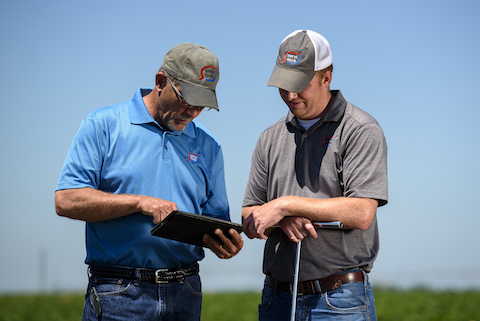ServiTech Makes Recommendations Regarding Drought Conditions
Senior Lab Expert Expects Growers to Deal with High Nitrates and Low pH
Areas of the country are in a severe drought, with conditions so extreme some growers are taking their soil conditions day by day. ServiTech, the nation’s leading independent crop consulting and agriculture lab, is making a prediction growers should lean in to hear.
In a cyclical pattern that comes with extreme drought, ServiTech expects to work with its grower customers to manage a uniquely high level of nitrates in the soil as well as potentially lower pH levels.
ServiTech’s Senior Lab Agronomist Fred Vocasek said it may be to a grower’s advantage to help blunt the effects of severely dry conditions with zone-specific soil tests to help make nitrogen management decisions.
“Drought conditions have been present for an extended time in many areas and with that drought comes a cyclical effect to soil microbial activity,” Vocasek said. “Optimum soil temperature is between 60 and 95 degrees for microbial activity. When we accumulate more heat units faster and for a longer time, which is what happens during drought, microbes in the soil work longer and harder to decompose organic matter. This results in more nitrate accumulation.”
Vocasek says in 2011, a record-setting year for agriculture, the drought line broke at Interstate-70 in Kansas and Colorado. ServiTech compared the soil test nitrates received that summer, south versus north of I-70 in the area including the panhandles of Oklahoma, western Kansas and eastern Colorado.
“The droughted area to the south had soil test nitrate levels roughly double those of the northern part of this area,” Vocasek says. “Soil nitrate tests showed about 15 to 25 pounds of nitrogen per acre more in the droughted southern area than the northern area. That’s easily worth $10 to $15 per acre as nitrogen fertilizer. Fifteen bucks, an acre’s worth of nitrogen, will pay for a soil test, so the ROI is a lot better than Wall Street.”
Vocasek said a lack of rain also keeps nitrate from being moved into the subsoil, which means surface nitrate accumulations may be higher than normal. Accumulations of 50 to 100 pounds of nitrate per acre may not be unusual even in dryland fields that did not receive fertilizer nitrogen.
Since 1975, ServiTech has worked with customers to test their soil and hone in on variability between zones in the field. The company has shared a message of high soil nitrate levels due to drought in the past and growers should realize the soil test numbers are real and dependable. This season, nitrate variability across drought stressed fields may be more than expected, so soil sample sampling smaller zones can help make solid nutrient management decisions.
While elevated soil nitrates during extreme drought aren’t unusual, Vocasek said that ServiTech agronomists have often noted lower soil pH values. Soil pH can be as much as 0.4 to 0.5 units lower after a season of prolonged drought compared to years with normal rainfall.
“The drought of 2011 set records in many areas where depression of soil test pH was common,” Vocasek said. “Soil tests often return to more normal levels when rainfall resumes, so growers shouldn’t panic. ServiTech offers a Sikora-2 method for measuring soil pH, which can more accurately reflect soil pH in sandy and drought-affected soils.”
Vocasek said the key is for growers to make sure they are tracking soil pH to see if soil acidity is increasing, which is a potential problem for wheat in areas that have not been affected in the past.
“In summer 2011, there were places in west Texas where soil pH was 0.7 to 0.8 units lower than normal,” Vocasek said. “The depression of soil pH is due to natural changes occurring as soil dries down during long-term drought.”
For more information contact your ServiTech agronomist at (800) 557-7509.
##

